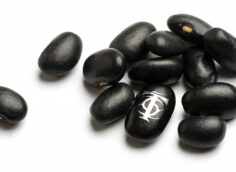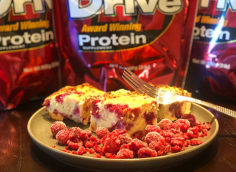The lay press has recently glommed onto the results of a recent study that found that eating whole grain bread conveyed the same cardiovascular benefits as eating blueberries.
It's an appealing thought, especially since that kind of "permission" to eat bread without a guilty conscience would make life a lot easier. You can't, after all, put a quarter-pound of turkey between two halves of a blueberry and munch on it while you continue working or gaming or doing whatever you were doing before you decided to grab a quick bite.
But bread's been demonized, demonized as being poor in micronutrients (vitamins and minerals), having too much carbohydrate, and being full of the devil dust known as gluten.
And all of that's true. When it's compared to most fruits or vegetables, bread does come up short on micronutrients. And, depending on the sensibilities of the person you're talking to, bread is also guilty of being too high in carbohydrates, guilty of containing gluten, and maybe even guilty of compelling Lizzie Borden to kill her parents with an axe.
So how in the world of pastrami on rye can some scientists say that eating bread is as healthy as eating blueberries, which are known worldwide as a super food? A brief look at that recent study shows us how they came to that conclusion.
What They Did
A team of scientists from the University of Reading and Rothamsted Research recruited 19 healthy young men to participate in their trial. The men were placed in three groups. One group was fed a high-fiber flatbread.
A second group received the same high-fiber flatbread, albeit treated with an enzyme that "freed up" the bread's ferulic acid, a common polyphenol found in a multitude of plant foods.
Another group was fed a low-fiber, white bread control.
What They Found
The group that ate the enzyme-treated bread – and ended up absorbing higher levels of ferulic acid – experienced a significant short-term boost to blood flow, similar to what they might have experienced had they eaten some blueberries.
The group that ate the whole grain flatbread that wasn't enriched with the enzyme also experienced improved blood flow, but nowhere near the levels of the first group.
The group that had eaten the control bread experienced zero improvements in blood flow and while the paper didn't describe it this way, I imagine their white-bread hearts made kind of a sad, sucking noise, like if a peach pit were stuck in an engine's fuel line.

What to Make of This Info
What's really cool about these findings is that they might enable bread to claim a spot next to the hoity-toity fruits and vegetables. No longer will bread have to travel in steerage; it can come up on deck and mingle with all the other high-class plant products.
The not-so-cool part of the study was that the bread that led to the cardiovascular improvements had to be treated with an enzyme in order to make it as healthy as blueberries.
Normally, the fiber found in bread binds to the ferulic acid (the same as it likely does to a number of other healthful polyphenols) it contains, thus making it less bioavailable to the body, but the enzyme un-binded it.
Sure, future bakers could easily add the enzyme to their breads. It's not as if it's an entirely alien concept as a lot of them are already using the same enzyme to break down fibers in the malting process (used to make malt bagels, biscuits, and other bready foods).
But the good news is that we don't have to wait for this new discovery to trickle down into the loaf pans of the baking industry. Read carefully what one of the researchers had to say about their discovery:
"All whole grain and high fiber breads contain similar contents of phenolic compounds to those present in blueberries and other superfoods, but the chemicals are tightly bound to the fiber in the bread – meaning we don't typically get the health benefits from consuming them unless eaten regularly over the long term."
Did you catch that? If you eat multi-grained breads regularly, you get the benefits without having to rely on the yet-to-be incorporated enzyme.
How to Use This Info
The time where we judged the merits of foods solely on how much freakin' vitamin C or riboflavin they contain is gone, or at least it should be. Of comparable importance, especially in this age when even our damn water is vitamin laced, are polyphenols.
These plant-derived, bioactive compounds can convey health benefits such as lowered blood pressure, lessened endothelial dysfunction, reduced cholesterol, lowered risk of type 2 diabetes, lowered risk of cancer, and reduced chance of just about everything terrible that can happen to a body.
And bread, at least bread that's minimally processed, is as rich in certain polyphenols as many of the fruits and vegetables we generally associate them with, so eat your Dave's Killer Bread. Even eat your popcorn. Eat any minimally processed plant food and take satisfaction in the knowledge that you're doing your body some good.
Or, alternately, stop worrying about whether you ate enough whole grain bread, blueberries, kale, etc. on any given day and use Superfood, which contains an array of 18 strategically-chosen freeze-dried fruits and vegetables, each with a huge array of healthful polyphenols.
Source
- Alice Turner, et al. "Increased bioavailability of phenolic acids and enhanced vascular function following intake of feruloyl esterase-processed high fibre bread: A randomized, controlled, single blind, crossover human intervention trial." Clinical Nutrition, August 07, 2020.
As an Amazon Associate, T Nation earns from qualifying purchases. When you buy something, using the retail links in our articles, we may earn a small commission. T Nation does not accept money for editorial reviews. Read more about our policy.






